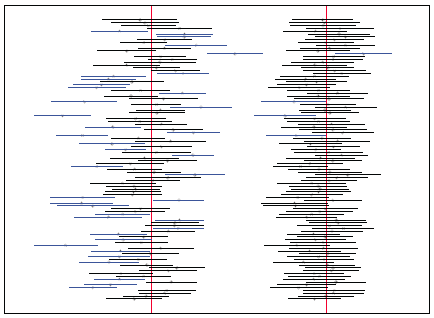
The Quantitative Analysis Institute can develop instructional materials for statistics lessons in various courses. In Spring 2014, discussions of simple linear regression in Econ 203: Econometrics were supplemented by simulations demonstrating what happens to a regression when underlying assumptions are not met. This approach allows students to visualize the relative importance of the regression assumptions and build intuition for interpreting data analyses.
Simulation also plays a major role in Quantitative Analysis Institute Summer Course, which teaches both fundamental statistical concepts and statistical computing skills. For example, as part of learning the statistical software R, students in the 2013 and 2014 summer courses ran their own simulations demonstrating the Central Limit Theorem and exploring how well it works under various circumstances.
Simulation can be used to show students what happens to any statistical method when the underlying assumptions are not true or to develop intuition for statistical concepts such as confidence intervals, Type I and Type II error, power, p-values, and beyond. A simulation-based lesson can be effective either as a lecture presentation or as a lab exercise where students learn how to create the simulation themselves.
Faculty: Kartini Shastry (Econ 203), Cassandra Pattanayak (QAI Summer Course)
LTS Staff: Cassandra Pattanayak
Keywords: Statistics, simulation, statistical computing
